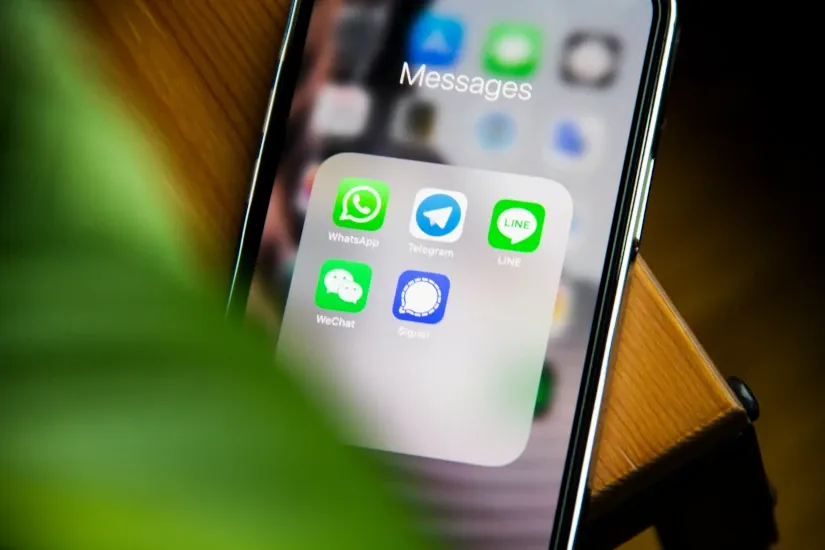
4 Hacks for Effective Communication in The Workplace
You're in a meeting, nodding along as your manager explains a project. You leave feeling confident about next steps—only to realize three days later that you and your teammate interpreted the instructions completely differently. Now you're behind schedule, frustration is mounting, and you're wondering how something so simple went so wrong.
If this scenario sounds familiar, you're not alone. According to research from The Economist Intelligence Unit, communication barriers cost businesses an average of $37 billion annually. Meanwhile, a study published in Forbes found that 86% of employees and executives cite lack of collaboration and ineffective communication as primary causes of workplace failures.
And the truth is that most workplace communication advice tells you to "be clear" or "listen actively"—but what does that actually mean in practice? Generic platitudes don't help when you're navigating a tense email exchange with your boss or trying to get your point across in a room full of competing voices.
The difference between teams that communicate seamlessly and those that constantly misfire isn't talent or good intentions—it's specific, repeatable strategies that turn communication from a soft skill into a practical system. These four hacks will give you concrete frameworks you can implement immediately, transforming how you connect, collaborate, and get results at work.
Hack #1: The 24-Hour Rule—Stop Emotional Emails Before They Start
What It Is
The 24-Hour Rule is simple: If you're upset, frustrated, or emotionally charged about a workplace situation, write the email or message if you need to—but don't send it. Save it as a draft and revisit it after 24 hours (or at minimum, after you've slept on it).
Why It Works
Research from Harvard Business School shows that emotional arousal significantly impairs our ability to communicate professionally. When we're triggered, our amygdala—the brain's emotional center—essentially hijacks our prefrontal cortex, where rational thinking happens. This is why emails written in frustration often escalate conflicts rather than resolve them.
A study found that 64% of workplace conflicts could be traced back to communication sent during emotional states. The participants who implemented a mandatory pause before sending difficult messages reported 47% fewer misunderstandings and conflicts.
The 24-hour pause gives your nervous system time to regulate. What felt like a critical injustice at 4pm on Tuesday often looks like a simple miscommunication by Wednesday morning. You'll still address the issue—but with clarity instead of reactivity.
How to Implement It
Step 1: Write it out When you're frustrated, open your email or document and write exactly what you want to say. Don't censor yourself. This serves as emotional release and helps you process your feelings.

Step 2: Save as draft DO NOT add recipients to the "To:" field yet. Save it in your drafts folder or in a separate document. This removes the temptation to hit send in a moment of impulse.
Step 3: Wait 24 hours (or overnight minimum) Give yourself space. Go to the gym, sleep on it, talk to a trusted friend outside work. Let your emotional state return to baseline.
Step 4: Revise with fresh eyes When you return to the message, read it as if you're the recipient. Ask yourself:
- Is this tone professional?
- Does this solve the problem or escalate it?
- Am I addressing behavior and outcomes, not attacking character?
- Would I be comfortable if my entire team saw this?
Step 5: Rewrite as necessary Most people find they completely reframe their message after the waiting period. The core issue remains, but the delivery becomes constructive rather than combative.
Real-World Example
Before (Emotional): "I can't believe you threw me under the bus in today's meeting. You completely misrepresented my work in front of the entire team. This is totally unacceptable and unprofessional."
After (24 Hours): "Hi [Name], I wanted to touch base about today's meeting. When you mentioned the timeline for my project, I think there may have been some miscommunication. My understanding was that we agreed on a different delivery date. Can we schedule a 15-minute meeting to align? I want to make sure we're on the same page moving forward."
Notice how the second version addresses the same issue but opens dialogue instead of slamming doors shut.
Hack #2: The 3-Point Maximum—Why Less Information Means Better Understanding
What It Is
The 3-Point Maximum is a communication framework that limits any message, presentation, or meeting agenda to three main points. No more, no less.
Why It Works
Cognitive psychology research shows that our working memory can effectively hold 3-4 pieces of information at once—this is called "Miller's Law" or the "Magic Number 7, Plus or Minus 2." When you exceed this cognitive load, retention drops dramatically.
A study from McKinsey & Company found that executives forget 90% of information presented in meetings within 48 hours—unless that information is organized into clear, limited takeaways. When presenters used the 3-point structure, retention jumped to 65%.
Think about the most memorable speeches or presentations you've experienced. Chances are, they organized information around three core ideas. Steve Jobs was famous for this: "Today we're introducing three revolutionary products..." Our brains are wired to remember and process information in threes.
How to Implement It
For Emails:
- Start with your main point in the first sentence
- Include no more than three supporting details or requests
- Use numbered lists to make your points crystal clear
- End with one specific call-to-action
Email Template:
Hi [Name],
I wanted to discuss [main topic].
Here are the three key points:
1. [First point with specific detail]
2. [Second point with specific detail]
3. [Third point with specific detail]
Next step: [One clear action item]
Thanks,
[Your name]
For Meetings:
- Send a pre-meeting agenda with three objectives
- Structure your speaking time around three points
- Summarize meetings with "Here are the three things we agreed on..."
- Follow up emails should reinforce the same three points
For Presentations:
- Organize slides around three main sections
- Use "The Rule of Three" in your opening: "Today I'm going to cover..."
- Each section should have one core message
- Close by recapping your three main points
What to Do When You Have More Than Three Points
If you genuinely have more than three important things to communicate, you have two options:
Option 1: Categorize Group related items under three umbrella themes. For example:
- Point 1: Timeline updates (includes 3 sub-items)
- Point 2: Budget considerations (includes 2 sub-items)
- Point 3: Next steps (includes 4 sub-items)
Option 2: Prioritize ruthlessly Ask yourself: "What are the three most critical things this person needs to know or do?" Everything else can be:
- Moved to a separate conversation
- Included in an attachment or document they can reference later
- Discussed in a follow-up meeting
Real-World Example
Before (Information Overload): "Hi team, we need to talk about the client project. The deadline moved up, but also the budget increased. Sarah is out next week, so we need coverage. The client wants different deliverables now. We should probably loop in marketing. Also, can someone review the contract? And we need to update the timeline doc. Plus legal has questions about the terms..."
After (3-Point Maximum): "Hi team, quick update on the client project—three key changes:
- Timeline: Deadline moved from March 15 to March 1 (two weeks earlier)
- Deliverables: Client now wants video assets in addition to written content
- Coverage needed: Sarah is out Feb 24-28; we need someone to handle client calls
Next step: Let's meet Tuesday at 10am to reassign deliverables and confirm timeline.
Thanks, [Your name]"
Notice how the second version is actionable, clear, and doesn't overwhelm the reader with eight different concerns at once.
Hack #3: Strategic Silence—How Pausing Changes Conversations
What It Is
Strategic silence is the deliberate use of pauses in conversation—both after you speak and after others speak—to create space for reflection, deeper thinking, and authentic response.
Why It Works

We live in a culture that fears silence. In meetings, we rush to fill pauses with more words, assuming that talking equals productivity. But neuroscience research shows that periods of silence actually enhance cognitive processing and lead to higher-quality decision-making.
According to a study in the Journal of Applied Psychology, negotiators who used strategic pauses (waiting 3-5 seconds after the other person finished speaking) achieved 13% better outcomes than those who responded immediately. The pause created perceived thoughtfulness and authority.
When you speak and then pause—rather than rushing to explain, justify, or elaborate—you give your words weight. When you listen and then pause before responding, you signal respect and consideration. Both uses of silence communicate confidence and intentionality.
How to Implement It
After You Make a Point:
When you've made an important statement or asked a significant question, resist the urge to keep talking. Instead:
- State your point clearly and concisely
- Stop talking
- Count to 5 in your head (this feels longer than you think)
- Wait for the other person to respond
This technique is especially powerful in:
- Salary negotiations ("My salary expectation is $X." [pause])
- Presenting recommendations ("I believe we should pursue option B." [pause])
- Asking for feedback ("I'd like your honest assessment of my performance." [pause])
After Someone Else Speaks:
When someone finishes talking—especially if they've shared something important, complex, or emotional—pause before responding:
- Let their words land (2-3 seconds of silence)
- Take a breath
- Then respond
This pause serves multiple purposes:
- Shows you're processing what they said (not just waiting for your turn to talk)
- Gives them space to add more if they want to
- Prevents you from interrupting their thought process
- Demonstrates respect and active listening
The Discomfort Is the Point
Strategic silence will feel uncomfortable at first. You'll want to rush in and fill the space. Don't. That discomfort is actually creating productive tension that leads to better outcomes.
Real-World Example
Scenario: Asking for a Raise
Without Strategic Silence: "I'd like to discuss my compensation. I've been here two years and taken on significant additional responsibilities and I think I deserve a raise and I've been researching market rates and I'm really committed to this team and I know the budget might be tight but..."
[You're nervous, so you keep talking, which dilutes your message and makes you seem uncertain]
With Strategic Silence: "I'd like to discuss my compensation. Based on my expanded responsibilities and market research, I'm requesting a salary increase to $85,000."
[Pause. Count to 5. Let it land. Wait for their response.]
[Manager might say: "Let me think about that..."]
[Pause again. Don't rush to fill the silence with backtracking or justification. Wait for them to continue.]
The silence creates space for negotiation. Your confidence in pausing signals that you're serious and that you believe in your request.
Hack #4: The Mirror-and-Clarify Method—End Miscommunication for Good
What It Is
The Mirror-and-Clarify Method is a two-step communication technique where you:
- Mirror: Briefly paraphrase what you heard the other person say
- Clarify: Ask a confirming question to ensure alignment
This creates a closed feedback loop that catches misunderstandings before they become problems.
Why It Works
According to research from Stanford University, 74% of workplace conflicts stem from assumptions rather than actual disagreements. We think we understand what someone meant, but we're actually operating on our interpretation, not their intention.
The FBI teaches this technique to hostage negotiators because it's so effective at building rapport and preventing catastrophic miscommunication. If it works in life-or-death situations, it definitely works in your Tuesday team meeting.
A study found that teams who used mirroring techniques reduced project delays due to miscommunication by 41%. The simple act of confirming understanding before moving forward saved countless hours of rework.
How to Implement It
The Mirror-and-Clarify Formula:
Mirror: "So what I'm hearing is [paraphrase their main point in your own words]..."
Clarify: "Is that accurate?" or "Did I get that right?" or "Am I understanding you correctly?"
Let them confirm or correct.
Then proceed based on confirmed understanding.
When to Use This Method
During task assignments:
- Manager: "I need this report by end of day."
- You: "So you need the client report submitted by 5pm today—is that correct?"
- Manager: "Actually, end of day Friday. Today I just need the data pulled."
- You: "Got it. Data by 5pm today, full report by Friday at 5pm."
During disagreements:
- Colleague: "I don't think we should move forward with this approach."
- You: "So you have concerns about this strategy—can you help me understand what specifically worries you about it?"
- Colleague: [Explains specific concerns]
- You: "Okay, so your main concern is the timeline risk, not the approach itself. Let me address that..."
After meetings:
- "Before we wrap, let me confirm our next steps. I'm handling X, Sarah is handling Y, and we're meeting again next Thursday at 2 pm. Did I capture that correctly?"
Why Simple Paraphrasing Isn't Enough
The "Clarify" step is crucial. Simply paraphrasing without asking for confirmation can come across as condescending ("I know, I heard you"). The question creates collaboration and gives the other person agency to correct any misunderstanding.
Condescending: "So what you're saying is you want this done by Friday." [Period. No question.]
Collaborative: "So what I'm hearing is you want this done by Friday—is that right?" [Question. Creates dialogue.]
Advanced Application: The "Tell Me More" Bridge
When you sense there's more beneath the surface, use the Mirror-and-Clarify method with an extension:
"So what I'm hearing is [mirror], is that accurate? [pause for confirmation] Tell me more about what's driving that concern."
This technique:
- Shows you understand the surface issue
- Invites deeper conversation
- Uncovers root causes instead of symptoms
- Builds trust through demonstrated listening
Real-World Example
Scenario: Project Feedback from Manager
Without Mirror-and-Clarify:
- Manager: "This needs more work before we present it to the client."
- You: "Okay, I'll revise it."
- [You spend 10 hours making changes you think they want]
- [You return with revisions]
- Manager: "This still isn't what I was looking for."
- [Frustration, wasted time, confusion about expectations]
With Mirror-and-Clarify:

- Manager: "This needs more work before we present it to the client."
- You: "I want to make sure I'm addressing the right things. When you say it needs more work, are you primarily concerned about the data analysis, the recommendations, or how it's formatted for the presentation?"
- Manager: "Actually, the analysis is solid. I'm concerned the recommendations aren't specific enough for what the client is asking for."
- You: "Got it. So you want me to make the recommendations more actionable and directly tied to their stated objectives—is that right?"
- Manager: "Exactly. Focus there."
- You: "Perfect. I'll revise the recommendations section specifically and have it back to you by tomorrow afternoon."
Notice how the second approach saves time, prevents frustration, and ensures you're working on the actual issue.
How to Implement All Four Hacks
Start with One
Don't try to implement all four strategies at once. Choose the hack that addresses your biggest communication challenge right now:
- Struggle with emotional responses? Start with the 24-Hour Rule
- Feel like people don't remember what you say? Start with the 3-Point Maximum
- Rush through conversations? Start with Strategic Silence
- Constantly dealing with misunderstandings? Start with Mirror-and-Clarify
Practice Deliberately
For one week, focus exclusively on your chosen hack. Use it in every relevant situation:
- Set reminders on your phone
- Add a note to your desk
- Tell a trusted colleague you're working on this skill and ask them to give you feedback
Create Communication Rituals
Build these hacks into your workflow:
- Morning ritual: Review any "emotional draft" emails from yesterday before sending
- Meeting ritual: End every meeting with Mirror-and-Clarify of next steps
- Presentation ritual: Organize every presentation around three main points
- Conversation ritual: Take a breath (Strategic Silence) before responding to important questions
Communication Is a System, Not a Soft Skill
Here's what most people get wrong about workplace communication: they treat it as an innate talent you either have or don't. In reality, effective communication is a system—a set of specific techniques you can learn, practice, and master.
These four hacks give you that system:
- The 24-Hour Rule prevents emotionally-driven mistakes
- The 3-Point Maximum ensures your message is heard and remembered
- Strategic Silence creates space for better thinking and stronger presence
- Mirror-and-Clarify closes the loop on understanding
According to research, teams with highly effective communication are 4.5 times more likely to retain top talent and 20% more likely to report strong business results. The return on investment for improving your communication isn't just fewer misunderstandings—it's career advancement, stronger relationships, and measurable business outcomes.
The difference between workplace communication that frustrates and communication that fuels success isn't mysterious—it's methodical. And now you have the method.






